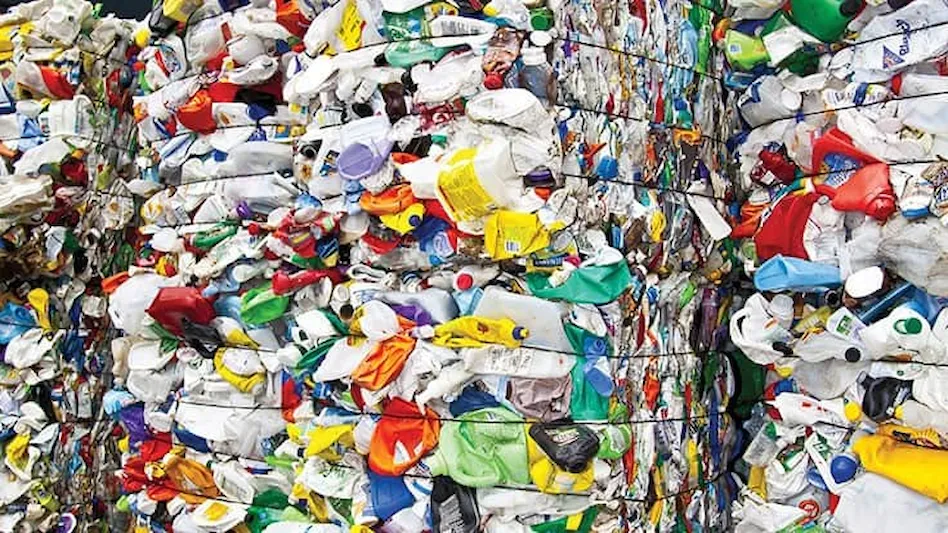
Photo courtesy of Shutterstock
Pricing for natural and mixed-color high-density polyethylene (HDPE) has been increasing to the point where it could test the limits of some buyers, sources say.
Ajit Perera, vice president of postconsumer operations at Talco Plastics Inc., a reprocessor and compounder based in Corona, California, says the rising price of mixed-color HDPE could test demand from some consumers that tend to buy recycled material because of the cost advantage it offers to virgin. “The haggling will happen next month,” he says in mid-February, referring to manufacturers of nursery pots and similar items that are not as committed to using recycled content as other companies are.
Perera says natural HDPE bottle bales are selling for 60 to 65 cents per pound in California, while the material is priced closer to 75 cents per pound on the East Coast where the competition is fiercer.
Mixed-color HDPE bottle bales are selling for 12 to 14 cents in California as of mid-February, a modest increase from the 11 to 13 cents they sold for the previous month, he adds. Prices for mixed-color HDPE bales on the East Coast are higher, Perera says, having reached the mid-20 cent range in mid-February. East Coast mixed-color HDPE bale prices had been in the low 20 cent range since December.
Perera says he anticipates that pricing will continue to increase for HDPE bales, particularly as demand from the pipe and automotive sectors increases.
The increase in pricing for mixed-color HDPE mirrors the increase in virgin HDPE pricing, he says. “When that happens, normally color starts to get scarce.”
A contact with a Midwest-based material recovery facility (MRF) that processes residential and commercial material says generation has been steady from both sectors. “Normal seasonal variations appear to track historical trends,” he says, citing lower polyethylene terephthalate (PET) and HDPE dairy bottle production.
He says polypropylene (PP) bale pricing is trending upward along with HDPE. “PP is hot, with pricing moving up from $140 per ton in early January to over $500 per ton currently. Natural dairy bottles are over $1,500 per ton.”
The MRF operator also says PET pricing is beginning to increase in anticipation of summer demand.
“All of these grades are responding to increased demand by consumers, and manufacturers are responding to that demand,” he says. “Additionally, generation is off slightly with winter weather, and oil prices have moved up.”
He describes demand as being solid, though some grades, including natural HDPE, are testing the limits on pricing. “Color HDPE, LDPE (low-density polyethylene), PP, ABS (acrylonitrile butadiene styrene), HIPS (high-impact polystyrene), PC (polycarbonate) and PET are all moving well with increasing pricing.”
The Midwest-based MRF operator says expanded polystyrene (EPS) is the exception, with limited domestic demand until April or May. “EPS demand is off, and this is a seasonal issue. Manufacture of EPS and picture frames from recovered EPS is at a low point this time of year.”
Both men point to challenges with transportation.
“There’s been a driver shortage due to COVID issues for almost 10 months, and prices for domestic shipments have increased significantly,” the MRF operator says. “In some cases, depending on the distance to a buyer and load weight, the increased sales price for materials has not kept up with transportation cost increases. We’ve had to reevaluate our buyers in light of increased pricing with some changes to alternates occurring.”
He adds, “The price of material is increasing quick enough that an order taken now, but delayed two weeks or more for shipping, may not be competitive.”
Perera predicts that the trucking issues that have been magnified by the pandemic will continue even after the pandemic ends.
He says his company is itemizing shipping costs and discounting its recycled material where possible. “We are doing what we can to mitigate the cost to the customer.”
Latest from Recycling Today
- Connect Work Tools names new service manager
- Aaron Industries expands color capability
- Massachusetts voters support modernizing state Bottle Bill
- Oceana Canada poll shows support for single-use plastics ban
- Enviri releases annual ESG report
- Umicore sees lower revenues across all business groups for first half of year
- NEO Battery Materials, Lotus Energy Recycling to partner
- Partnership aims to convert industrial plastic scrap to synthetic graphene





